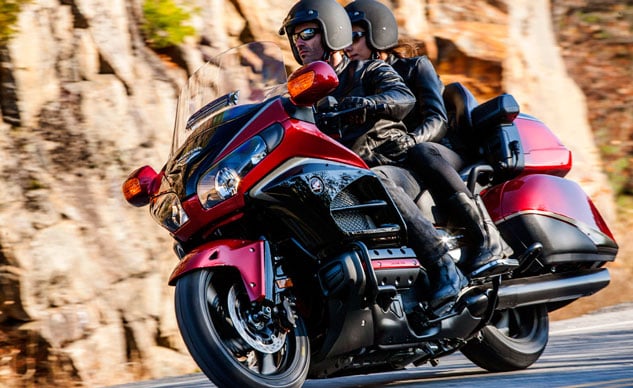Honda Finally Has a Fix for Gold Wing Rear Brake Drag Issue

It took a while but Honda finally has a solution to a problem affecting Gold Wings that resulted in two previous recalls. Honda first began a recall in December 2011 on Gold Wing from model years 2001-2010 and 2012. In September 2014, Honda re-addressed the problem, initiating a second recall because the first recall solution did not work.
Honda is in the process of amending the second recall with the National Highway Traffic Safety Administration with a solution and Gold Wing owners will soon be asked to bring their bikes in for inspection. Meanwhile, Honda is opening new recalls in Japan and Canada on Gold Wing models, expanding the recall to model years 2013-2015 as well. The original two NHTSA recalls do not include these more recent model years but we expect the recall will be expanded to include 2013-2015 models.
The problem is with the secondary master cylinder of the Gold Wing’s combined braking system. Something was causing the rear brake to drag, even when the brake pedal is released. A dragging rear brake may affect stability, increase the risk of a crash. More alarmingly, over an extended period of riding, it may generate enough heat to catch fire.
Documents released by NHTSA for the original 2011 recall attribute the problem to a lack of sufficient free play inside the master cylinder that can cause a blockage of the compensating port. Documents for the second recall indicate the problem was continuing to happen, even on recalled motorcycles. As of July 24, 2014, Honda had received 533 reports of rear brake drag including eight reports of small fires. At the time, Honda did not know what was causing the problem, nor did it have a solution for preventing it.
Honda now believes the problem is caused by a chemical reaction releasing a zinc compound into the brake fluid and preventing the hydraulic pressure from dropping and releasing the rear brake. Honda has developed a new secondary master cylinder that will prevent this from happening. Honda dealers will inspect the secondary master cylinders on affected motorcycles and, if necessary, replace it and flush the brake hoses.
[Source: Honda, Transport Canada, Japan’s Ministry of Land, Infrastructure, Transport and Tourism]

Dennis has been a part of the Motorcycle.com team since 2008, and through his tenure, has developed a firm grasp of industry trends, and a solid sense of what's to come. A bloodhound when it comes to tracking information on new motorcycles, if there's a new model on the horizon, you'll probably hear about it from him first.
More by Dennis Chung




























Comments
Join the conversation